Back in July I visited the Wollongong PCYC (Police Citizen’s Youth Centre) permaculture community garden for the first time. I’ve wanted to take a tour of this garden for a while, as a lot of local permaculture people have been involved in it and I’ve heard lots of good things about it. I’ve never quite found the time, though, despite working just around the corner from it!
It was well worth it!
Let me take you on a short photographic tour…

The welcome sign reads:
The Garden
Welcome to a community garden educational and dynamic demonstration site. Community volunteer members plan, build and maintain this area. We aim to promote:
- permaculture principles
- water harvesting
- building compost
- propagation
- organic pest control
- companion planting
- energy conservation
- aquaculture
- biodiversity
- sustainability
- growing food
- seed saving
- mulching
- networking
(and a little bit more that’s covered by plants!)
The garden is in North Wollongong, at the PCYC:

The garden area is an L-shape wrapping around a corner of a sports field, bordering on residential properties on the south and west, the PCYC building on the east, and the oval on the north side:

The design takes advantage of the northern sun (we’re in the southern hemisphere, so the sun is in the north) – low garden beds enjoy the full sun along the northern edges of the garden, with shrubs and bushes behind them, rising to a food forest of fruit trees along the southern side of the garden.
There are lots of banana circles throughout the food forest:
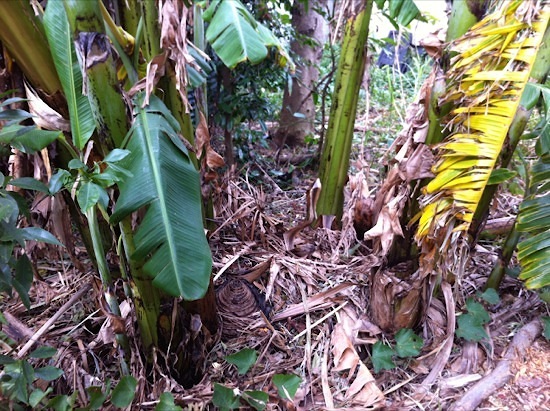
A nice bunch of bananas ripening:
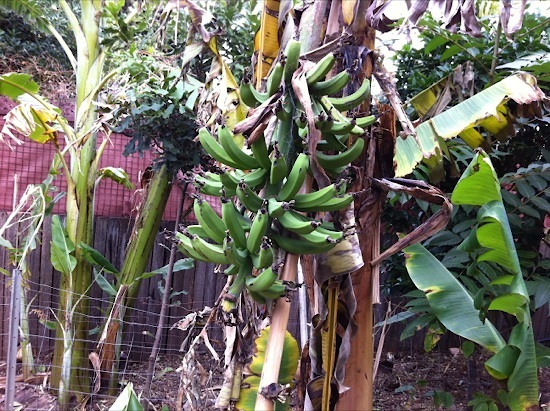
I like how spent banana trunks are used to edge the wood-chip paths through the food forest:

There are lots of really nicely-made signs throughout the garden to explain details to visitors. There were several compost tea barrels dotted through the garden, making them convenient to fill and to use the resulting fertiliser (“magic potion”!).
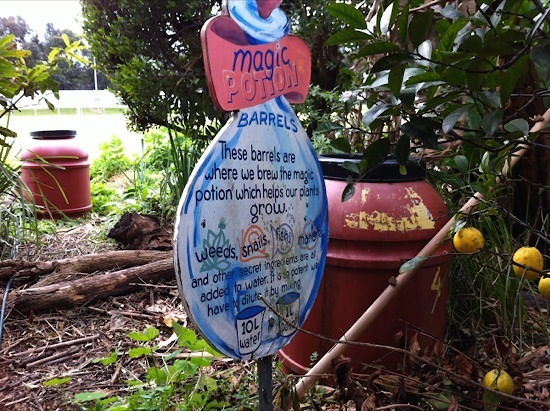
Lots of useful herbs have been used as border plants, where they’re convenient to pick and release lovely fragrances as you brush by. Besides culinary and medical uses, they are also useful as animal feed, chop-and-drop mulch, living mulch, compost ingredients, and garden edging – in permaculture, everything has multiple uses, and every need can be met in multiple ways.
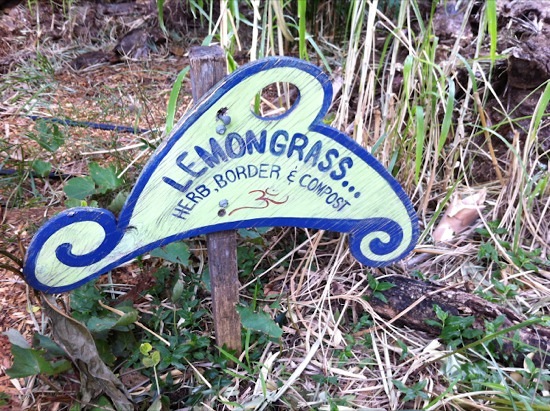

I really like this method of labelling trees – a piece of recycled inner tube attached to a wooden tag – it’s weather resistant, and won’t strangle the kaffir lime tree as it grows:
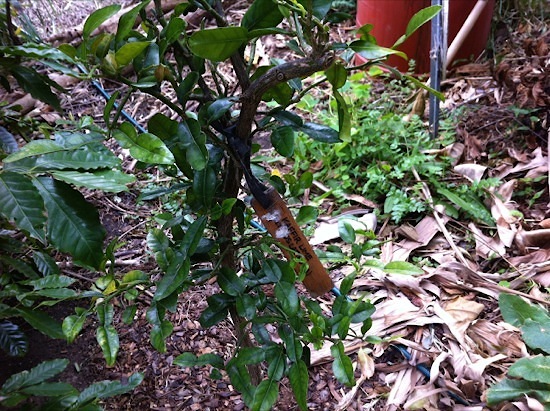
Coffee is a tree that likes shade, and so grows really well in a food forest understorey. These berries are nice and red, and ready for picking soon:
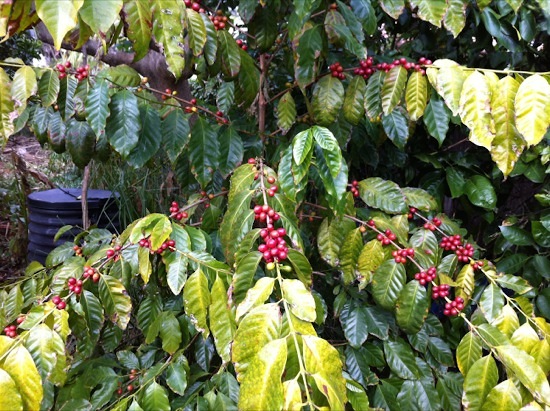
The paths through the food forest are nice and wide, giving good access for wheelbarrows and tools. They are mostly made from wood chips, which will hold moisture underneath for surrounding plants to access. As the wood chips decompose, they can be shovelled onto the nearby gardens and replaced with fresh wood chips.

The paths wandered through some beautiful little groves of bamboo. This is obviously a cool and peaceful place to sit in hot weather, as evidenced by the collection of chairs! The bamboo canes have also been harvested and used as supports and frameworks throughout the garden.

Behind the trees and bamboo, in the quiet back corner of the garden, is the chicken run. This must be heaven to a chicken – they’re a forest species, so would love all the shade, leaf litter, and bamboo to hide amongst.
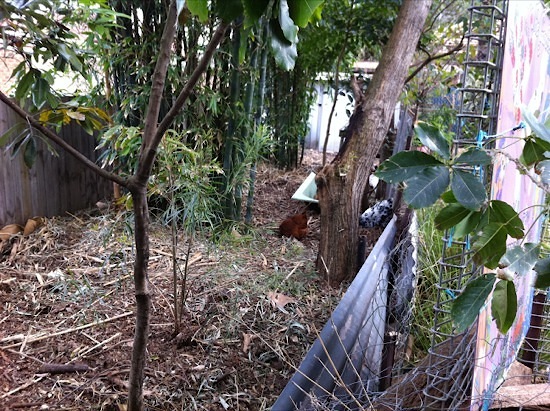
There’s a classic bathtub worm farm inside the chicken pen – I’m sure they love to get the odd escapee worm!
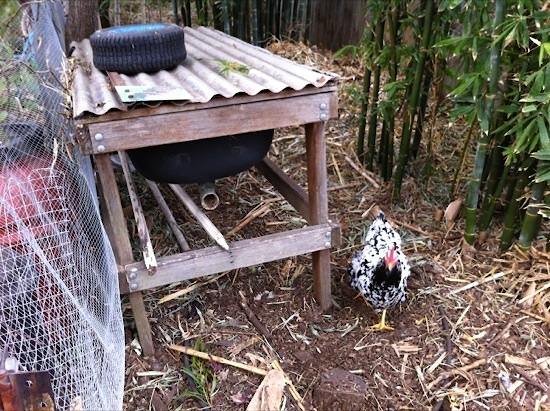
The chickens have a very fancy house. It looks like it was recycled from a piece of children’s playground equipment.
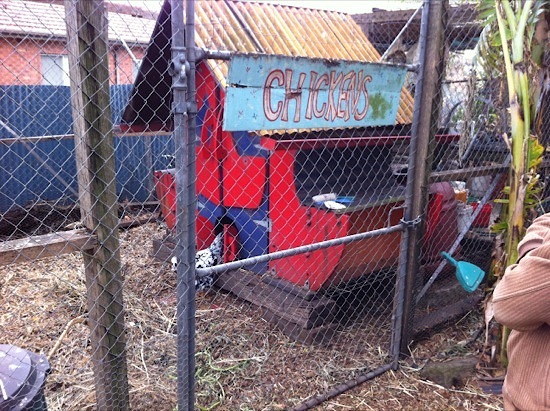
Rainwater is harvested from the chicken house roof and feed into a couple of recycled olive barrels, which then provide drinking water for the chickens.

Near the chicken pen, and making good use of the mesh wall, is an equipment storage and plant propagation area. I took this photo to record how they’re propagating bamboo – I want to do this with mine:
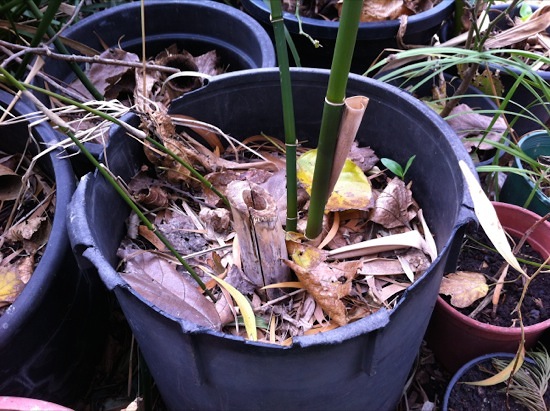
There were also some avocadoes being grown from seed:
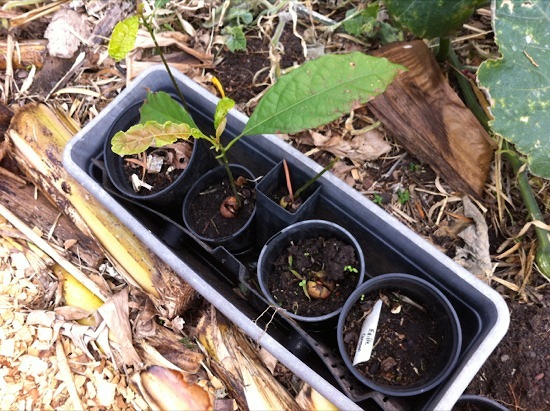
And of course, more banana plants:
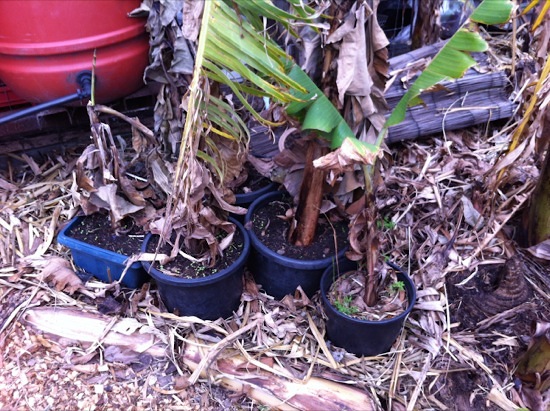
The compost bays looked really good. They’re made from recycled fence palings, and maybe bits of shipping pallets. Fresh stuff goes into one bay, one bay is left to age and break down, and the third bay holds ready-to-use compost.

I took this detail shot to record how the fronts of the compost bays were constructed. There were three panels on the front of each bay, which slid down between two rails. When you need to turn the compost or shovel some out, you simply slide the panels up and out for full access. The tops of the bays are hinged, making it easy to load them up.
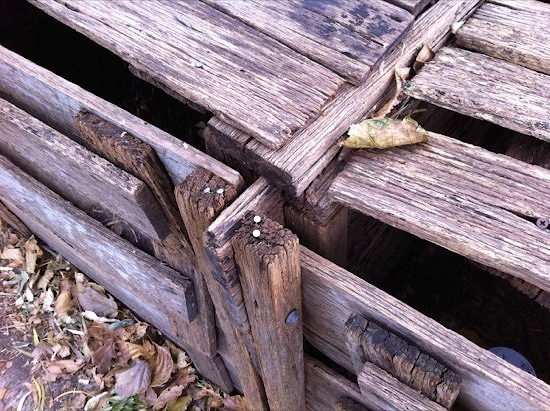
Maybe not that interesting to most people, but I like the inclusion of a materials receiving area in the community garden. There’s a gate to the road behind where I was standing to take this photo, so you can easily bring in a trailer or ute full of materials and unload it quickly. It can then be barrowed to where it’s needed within the garden.
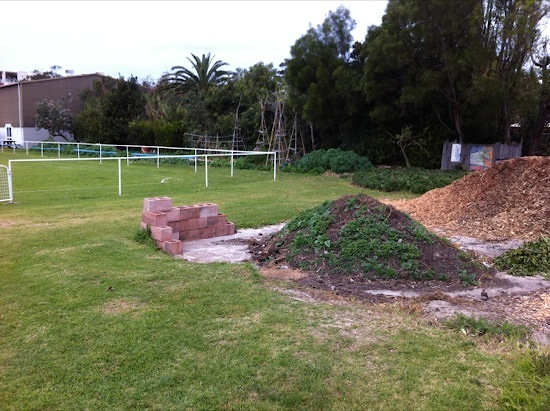
There’s an impressive pizza oven in this open area, too. The hefty posts suggest there are plans for a cover for this area, which will be a really nice place to gather and socialise.

Looking back from the materials receiving area, you can see the tables and chairs nestled under the trees. This makes an excellent shady meeting and eating area, with plenty of open space for people to spill out to when large groups turn up.
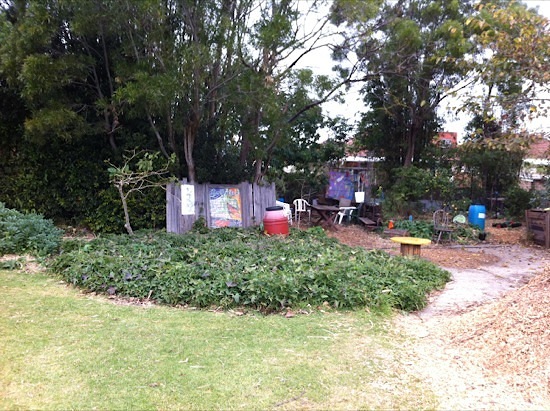
Returning back along the northern side of the garden, we have the open, full-sun vegetable beds. Here you can see some bamboo trellises for growing climbers like beans and peas:
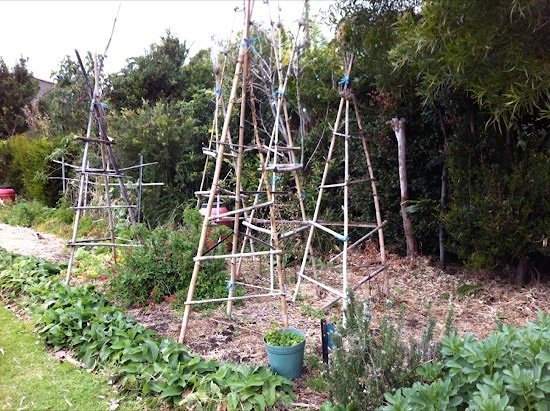
The root vegetable bed:

Looking along the length of the vegetable gardens:

Whew, that was a long post!
I hope you enjoyed this tour. The people who look after this permaculture community garden are doing an amazing job, and it’s well worth a visit if you live in the area. You can also follow them on Facebook.
If you’ve visited a community garden recently, please post links and photos below!
Comments
One response to “Wollongong PCYC Permaculture Community Garden Tour”
Thanks for the tour.
A lot of really excellent ideas there.
Looks like a really fertile place.